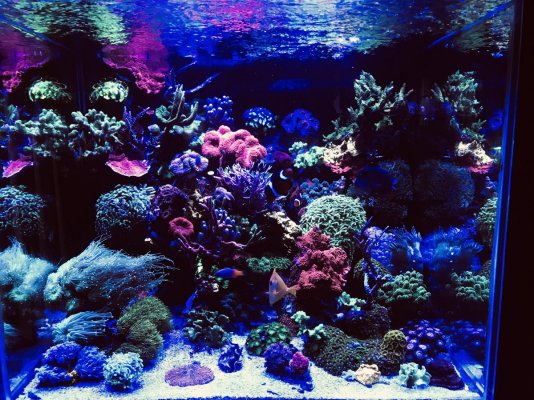- Joined
- Sep 16, 2017
- Messages
- 36
- Reaction score
- 17
Hello
I have a 93 gallon mixed reef cube with a deep sand bed of about 3-4” in the back and only about 1” in front. I have had several newly added divided leopard wrasses that were very active and eating suddenly disappear? And I just had a new one that was swimming normally and exploring the tank as the lights were dimming only to find him in the morning breathing very heavy and laying on its side. ( it died later that day). I just can’t figure out how it can go from being so active with normal behavior to dead literally overnight...My question is has anyone heard of or have any experience with hydrogen sulfide in the Deep sand bed being able to kill a burrowing fish?? This is the only thing I can think of that would cause a healthy fish to suddenly disappear all together or come out of the sand in bad shape. I have a very peaceful tank with no other wrasses so aggression is not a factor. I have no other predators like crabs either. All water parameters are in check .. so only thing I can think of is if they burrow deep into the sand bed and hit a pocket of hydrogen sulfide could this be enough over come them and kill them? This is a crazy theory I know but wanted the crowds thoughs. I have had this happen to two leopards and a black spotted leopard .
Thanks for your replies

I have a 93 gallon mixed reef cube with a deep sand bed of about 3-4” in the back and only about 1” in front. I have had several newly added divided leopard wrasses that were very active and eating suddenly disappear? And I just had a new one that was swimming normally and exploring the tank as the lights were dimming only to find him in the morning breathing very heavy and laying on its side. ( it died later that day). I just can’t figure out how it can go from being so active with normal behavior to dead literally overnight...My question is has anyone heard of or have any experience with hydrogen sulfide in the Deep sand bed being able to kill a burrowing fish?? This is the only thing I can think of that would cause a healthy fish to suddenly disappear all together or come out of the sand in bad shape. I have a very peaceful tank with no other wrasses so aggression is not a factor. I have no other predators like crabs either. All water parameters are in check .. so only thing I can think of is if they burrow deep into the sand bed and hit a pocket of hydrogen sulfide could this be enough over come them and kill them? This is a crazy theory I know but wanted the crowds thoughs. I have had this happen to two leopards and a black spotted leopard .
Thanks for your replies














